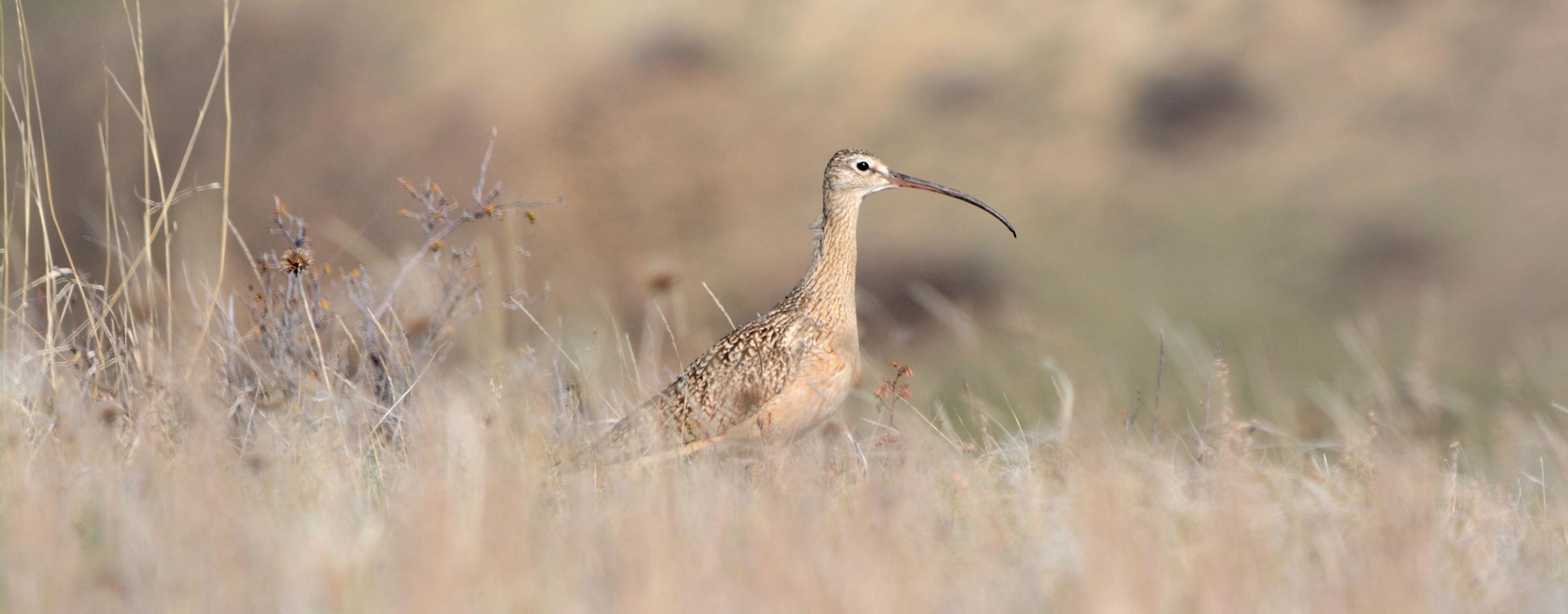
Back Cast
Off and on since the early 2000s, birders have driven North Dakota backroads in spring in search of long-billed curlews.
The process is simple. Volunteers drive 20-mile survey routes, stop forty times, get out of their vehicles and look and listen for five minutes for birds.
Finding what is North America’s largest shorebird (21-26 inches long) that sports an incredibly long, down-turned bill, and that loudly and proudly sort of sings its own name (a sharp curleee), isn’t so simple.
Like bighorn sheep, pronghorns and sage grouse, North Dakota is the eastern edge of the long-billed curlew’s range and there just aren’t many of them in the state during the nesting season.
“While volunteers are seeing more birds this year than last, there are some routes, places where we have habitat, that we just haven’t seen any birds,” said Sandra Johnson, North Dakota Game and Fish Department conservation biologist.
While volunteer birders and wildlife biologists know where to look for these conspicuous birds that have flown countless miles north from wintering grounds to nest, it’s not a given for many of us.
Knowing that long-billed curlews are members of one of five families of shorebirds, a good bet would be to at least look near water.
Good luck with that.
Turns out, this brownish bird blessed with such a long bill for probing deep into mud and sand in warmer climates for aquatic invertebrates, nests in upland grass cover, pastures grazed by cattle and the occasional stubble field.
“While we get the occasional sighting elsewhere, the key counties for where these birds nest in the state are Slope, Bowman, Billings, Stark and Golden Valley,” Johnson said. “If you want to see long-billed curlews, you have to go to southwestern North Dakota.”
Which is a far and unusual cry from the tidal estuaries, mudflats, flooded fields and beaches where the birds spend winter.
“It’s not uncommon to find curlews nesting near cow pies or near rocks, which likely helps to camouflage them because they are nesting in the middle of nowhere,” Johnson said.
Coordinating the curlew surveys in southwestern North Dakota is Cheryl Mandich with the American Bird Conservancy. Mandich said that while the long-billed curlew is a species of concern in North Dakota, bird numbers are also declining elsewhere on the northern Great Plains.
“We don’t want it to get to the point where you run the risk of losing them,” Mandich said.
When you consider the deadly realities of successfully raising young on the prairie and pastures, it’s a wonder any survive.
The four or so olive-buff eggs are often easy targets for coyotes, badgers and other predators. And, considering where the shallow nests are located, it’s not unheard of for livestock to step on the eggs.
But let’s say the adults, a pair of birds that share incubation duties, successfully safeguard the eggs until hatching.
Congrats.
But now the curlew young must contest the heat, disease, aerial and ground predators for roughly five weeks until they fledge or learn to fly. And to further complicate things, only one adult, the male, has stuck around to run interference until the birds successfully flap their wings.
It’s a tough road that’s playing out now in tough country.
